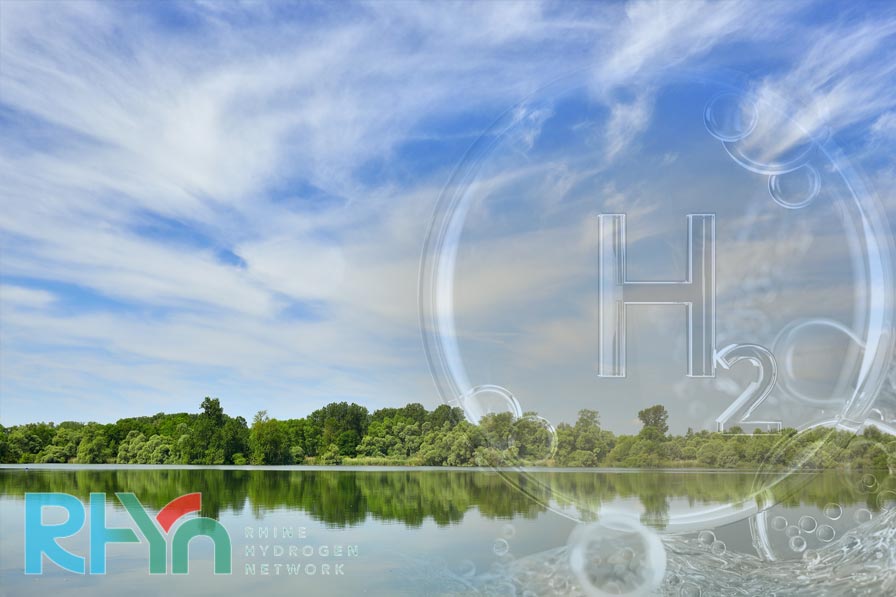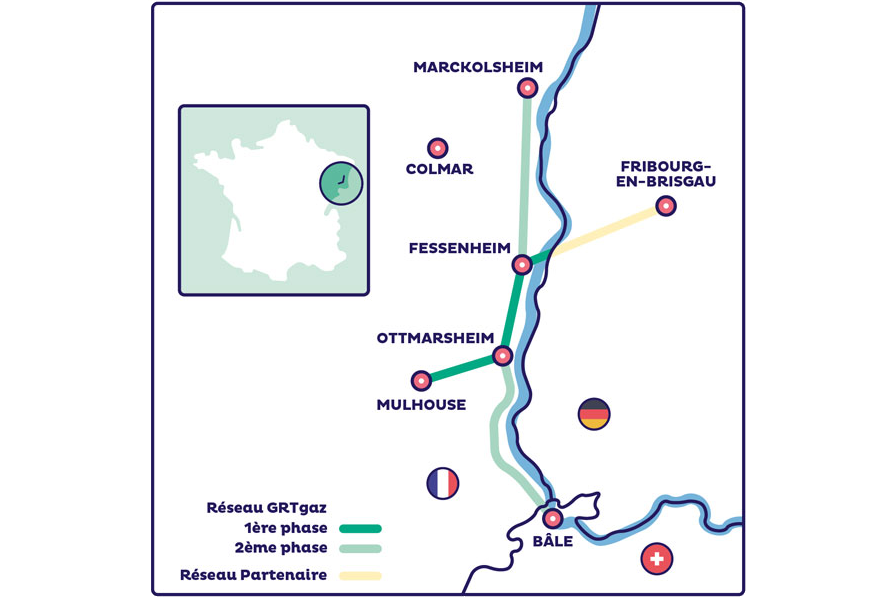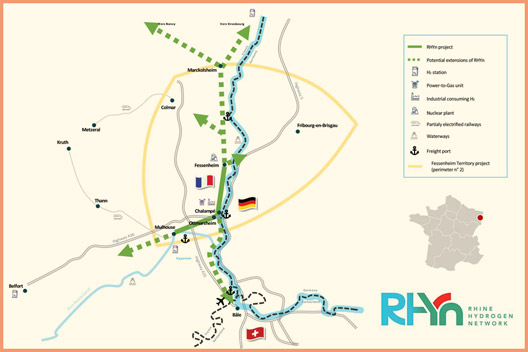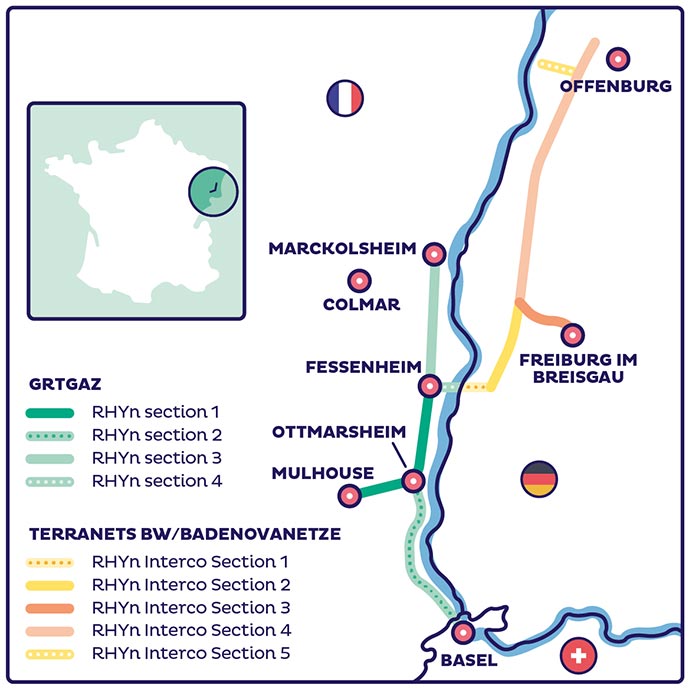Transporting hydrogen between France and Germany

On Monday 18 September, GRTgaz, France's leading natural gas transmission system operator, joined its partners terranets bw and badenovaNETZE – operators of the transport and distribution networks in the state of Baden-Württemberg – to launch a call for expressions of interest to assess needs and confirm the economic interest in hydrogen transport infrastructure between France and Germany in the Upper Rhine region (RHYn / RHYn Interco). The network operators are proposing to convert existing natural gas pipelines so that they can transport hydrogen instead, as well as building new infrastructure. The aim is for this new infrastructure spanning more than 200 km between the Grand-Est and Bade-Wurtemberg to be brought into service by 2028.
Both these regions located between France and Germany are home to industries which have a high decarbonisation potential, including chemicals, glass production and steel manufacture. These are also industries which have high hydrogen consumption potential.
The call for expressions of interest will run until 17 November 2023, and is aimed at all players across the Grand Est region (the RHYn project in France) and the southern Upper Rhine region (the RHYn Interco project in Germany) which are potentially concerned by hydrogen production or consumption and which have a need for hydrogen transport.
Infrastructure proposed in several distinct sections
The infrastructure that the three operators are planning will be delivered in several sections.
Market players may express their interest in each of these sections independently. Based on the results, the network's priority sections will be examined.
Open season market consultation stages
This open season market consultation will be split into two phases: an initial “non-binding” phase to identify the type of infrastructure that needs to be developed, and then a “binding” investment phase for all interested stakeholders.
Main phases of the consultation procedure

During the first consultation phase which gets underway today, interested companies are invited to fill in a questionnaire, depending on their zone of interest. The transport infrastructure operators will look at the answers to each proposal, and if there is demonstrable interest, a feasibility study for building the network will be conducted.
For this study, an agreement will be entered into between the network operator and the project initiator. This will ensure that any information exchanged will be kept confidential and will set out the parties' mutual contractual and financial obligations.
This cross-border initiative is part of the European Hydrogen Backbone project – Europe's way of ensuring security of supply for hydrogen consumers, and making sure that a hydrogen network connecting 28 European countries is in place for 2040.
Press contact
To go further

RHYn

